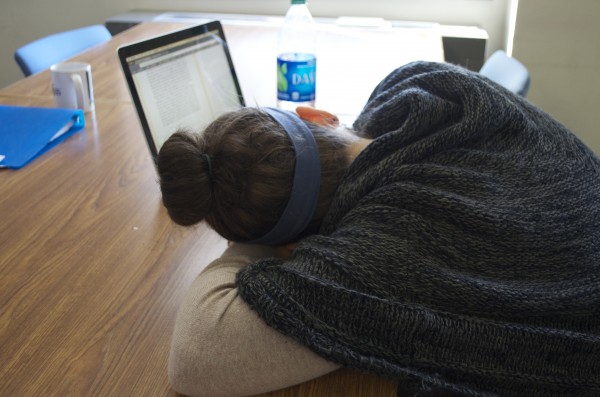Nap Nooks: The New College Craze
February 26, 2015
At Fordham and other colleges around the United States, students aren’t sleeping enough. According to a study conducted by Brown University, 73 percent of the college students surveyed admitted to having trouble with sleep. On average, according to the University of Georgia health center, college students get six hours of sleep, which is less than the Center For Disease Control and Prevention recommended seven to eight hours. Schools like New York University and the University of Georgia highlight lack of sleep as an issue that needs to be talked about, and have whole pages dedicated to the education of students in regards to developing better sleeping habits, as well how sleep affects the student.
James Madison University (JMU) in Virginia has also hailed the rest of students as a priority; what did they do? They created the Nap Nook. The Nap Nook is a term coined by JMU in order to refer to a place on campus that has been created specifically for students to catch up on sleep. According to the JMU Nap Nook website, “ … the Nap Nook provides students a place to ‘recharge their batteries’ in a healthy manner. Along with walk-ins, students have the unique option to reserve a bean bag in advance for a forty minute nap.” JMU has created the first ever “designated student napping center in a university setting.” Should Fordham College at Lincoln Center (FCLC) follow in JMU’s footsteps?
“Yes! It would be so helpful for commuters,” Jennifer Georges, FCLC ’17, said when asked about the idea of a Nap Nook at Fordham. Other students similarly responded with a resounding “Yes” when asked about the Nap Nook idea, but there are people at Fordham who disagree. “Nap nooks would not be useful at Fordham [Lincoln Center] … they would most likely not even be used for napping. Plus, they are really unsanitary and if anything, the school should invest in toilet seat covers.” Rachel Yan, FCLC ’18, said.
“As a commuter student, I am often on campus all day, sometimes with a four or five-hour gap between classes. Residents have the opportunity to go back to their dorms and nap if they want, but commuters are stuck in the caf or one of the lounges. I think sometimes it would be helpful to have a place to take a quick nap, especially when I have a lot of time to kill and don’t have work to do,” Christina Napolitano, FCLC ’18, said.
Paula Castillo, FCLC ’15, weighed in, “In my experience, I’ve had times where I was studying or doing an assignment but it was taking longer than I estimated therefore had to stay at school. Sometimes taking a nap in the tiny library chairs were a better option than taking the MTA home at midnight when all the lines are under construction and your commute takes twice as long as it regularly does. There are also moments when students have long breaks in between classes and a taking a nap wouldn’t hurt them.












